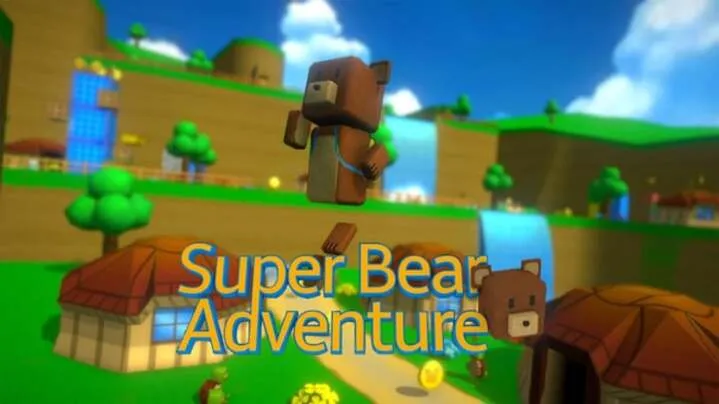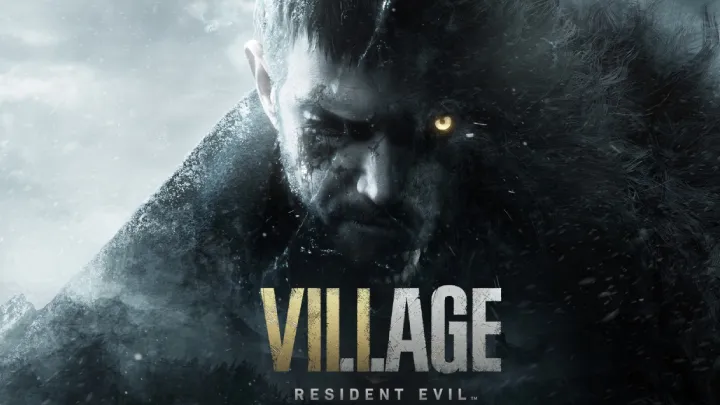Super Bear Adventure, created by Earthkwak Games, might seem like a cheerful 3D platformer at first glance — a world of bouncing bears, bright forests, and shiny coins scattered across open fields. Yet beneath its playful exterior lies something much deeper. The game quietly builds an emotional and introspective journey about freedom, discovery, and the joy of movement.
This article dives into one specific topic: how Super Bear Adventure uses its open-world architecture and environmental storytelling to express emotion. It’s not just a cute adventure game. It’s an experience designed around feeling — a story told without words, through space, sound, and silence. Across ten sections, we’ll explore how this small indie game achieves emotional depth through design, pacing, and atmosphere.
1. The Birth of a World Beyond Simplicity

Super Bear Adventure begins with a simple scene: a bear awakening in a prison, confused and alone. Within seconds, the tone is set. You’re not just playing to escape — you’re reclaiming a sense of freedom.
This moment lays the foundation for the game’s emotional journey. Every jump, roll, and glide becomes symbolic. Movement equals liberation. As the player roams from grassy plains to icy peaks, the world itself becomes the real protagonist — a landscape piecing itself back together after something was lost. There’s a quiet story behind every tree, cave, and ruin.
2. The Philosophy of Spatial Storytelling
Super Bear Adventure tells its story through geography instead of dialogue. Each space — whether it’s a ruined temple or a calm forest — communicates through design. There are no cinematic cutscenes or exposition dumps. You read the story through exploration.
Silent areas hold special meaning. The lack of dialogue lets imagination fill the blanks. Every player interprets the world differently based on how they explore it. This is what makes the game so emotionally personal — your version of the story feels uniquely yours.
Even the color palette contributes to the emotional tone. Bright greens suggest innocence and renewal. Shadowy caves create tension and fear. The environment’s visual language carries emotional messages that words never could.
3. The Emotional Weight of Exploration
Exploration in Super Bear Adventure feels deeply personal. The open world doesn’t rush you. It invites you to wander, to look around, to notice details that most games would hide behind objectives.
Each discovery — a hidden coin, a mysterious structure, a secret cave — feels like finding a piece of someone’s memory. The act of exploring becomes emotional, not because of rewards, but because of meaning. The slower rhythm of the game mirrors the rhythm of curiosity itself: moments of stillness followed by bursts of wonder.
That pacing makes every new discovery feel earned. Instead of overwhelming players with markers and missions, it trusts them to create their own sense of purpose.
4. The Design of Movement as Expression

Movement in Super Bear Adventure is more than gameplay — it’s emotional language. The bear’s ability to roll, glide, and bounce isn’t just fun; it expresses joy, resilience, and freedom.
Momentum becomes a metaphor. Each jump feels like hope, each glide like peace. The physics are light yet precise, giving players full control without restriction. That sense of physical freedom mirrors the emotional one — it’s liberating to simply move.
Even the smallest movements feel deliberate. When the bear rolls down a hill or leaps into the air, it’s as if the game is celebrating motion itself. The bear doesn’t speak, but its actions say everything: “I’m free.”
5. Architecture as Memory
The architecture of Super Bear Adventure’s world feels ancient, even sacred. From crumbling ruins to stone towers and floating islands, every structure tells a story about what once existed.
Broken bridges and worn stairways aren’t just design choices — they’re storytelling tools. They suggest history, loss, and endurance. Through architecture, the game expresses nostalgia for a world that has survived hardship.
The imperfections in the world make it feel real. Cracked stones and uneven edges create a sense of authenticity. Beauty in this game is never perfect. It’s emotional because it feels touched by time.
6. The Balance Between Solitude and Companionship
Much of Super Bear Adventure is spent alone, yet companionship plays a powerful role. The few moments when you meet other bears or free them from cages hit harder precisely because they are rare.
That balance between solitude and connection defines the game’s emotional range. The quiet stretches feel meditative, allowing players to reflect. Then, when you finally reunite with others, the warmth feels earned. It’s a simple but effective emotional contrast.
Solitude in this world isn’t loneliness. It’s reflection. The silence between encounters gives weight to every relationship you build, reminding you that togetherness is valuable because it’s not constant.
7. Environmental Mood and Atmosphere

The world of Super Bear Adventure doesn’t just look alive — it feels alive. Every region has its own emotional weather. Sunlit forests hum with calm, while dark caves echo with tension. Snowy peaks offer serenity, while villages feel safe and nostalgic.
The game’s soundtrack is a masterpiece of restraint. Light ukulele chords accompany exploration, while deeper tones appear in darker moments. The shifts are subtle but powerful, changing the mood without breaking immersion.
Sound design acts as emotional storytelling. The wind through trees, the splash of water, and the bear’s footsteps on different surfaces — all of it creates atmosphere. Without words, the game communicates emotion through sensation.
8. The Hidden Philosophy of Freedom
Freedom is the soul of Super Bear Adventure. It’s not just the absence of barriers — it’s the presence of choice. There are no time limits, no linear paths, and no forced missions. You play at your own pace.
This philosophy makes exploration deeply relaxing. The game doesn’t punish mistakes. Instead, it rewards curiosity. Every detour and misstep becomes part of the story.
In a gaming culture filled with objectives and stress, Super Bear Adventure feels like an act of rebellion. It gives you permission to play freely, without guilt or expectation. That’s where its emotional power lies — in letting players define meaning for themselves.
9. The Emotional Intelligence of Minimalism

Super Bear Adventure’s minimalism is its greatest strength. The visuals are clean, the interface uncluttered, and the mechanics simple. Yet, within that simplicity, every detail matters.
The result is emotional clarity. Nothing distracts from the core experience of exploration and discovery. Players are encouraged to feel, not to overthink. The slower pacing, gentle visuals, and smooth controls make the game almost meditative.
Minimalism doesn’t mean emptiness — it means intention. Every sound, shape, and color is chosen with care. It’s a reminder that emotional depth often comes from simplicity, not complexity.
10. The Legacy of Super Bear Adventure
Super Bear Adventure stands as proof that indie games can deliver profound emotional experiences without relying on words. Its design encourages self-reflection, not competition. It invites players to slow down, explore, and simply exist in a world that feels both ancient and alive.
This game belongs to a new wave of emotional platformers — titles like Journey, A Short Hike, and Fez — where movement becomes meditation. These games turn exploration into introspection. They remind players that games can be gentle, thoughtful, and deeply human.
The legacy of Super Bear Adventure lies in its quietness. It doesn’t need to shout. It just exists, softly and beautifully. It’s a world that breathes, a story that listens, and an adventure that feels like a dream you can walk through.
Conclusion
Super Bear Adventure might look like a lighthearted platformer, but it’s far more than that. It’s an emotional experience built on freedom, solitude, and rediscovery. Through its open-world design, soundscape, and movement, it teaches players that exploration can be a form of reflection — a journey both outward and inward.
It’s not just about saving the world. It’s about feeling alive within it. And that is what makes Super Bear Adventure one of the most quietly powerful indie games ever made.

















